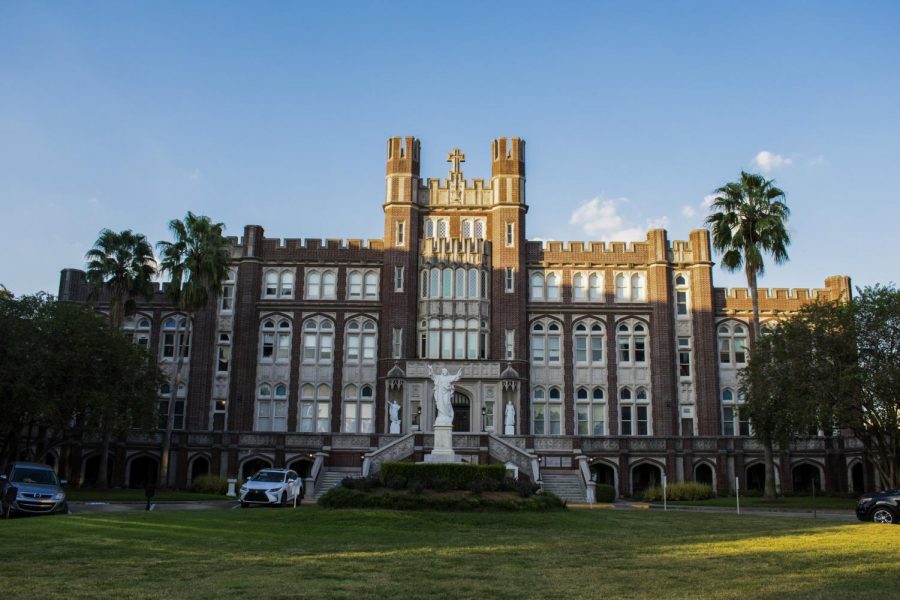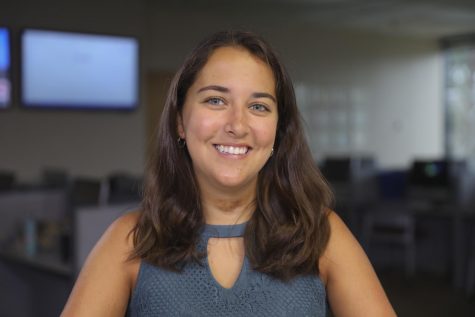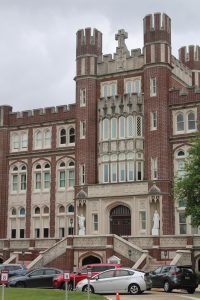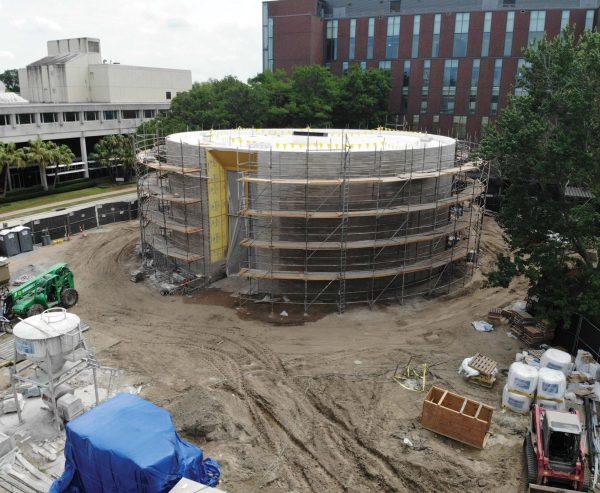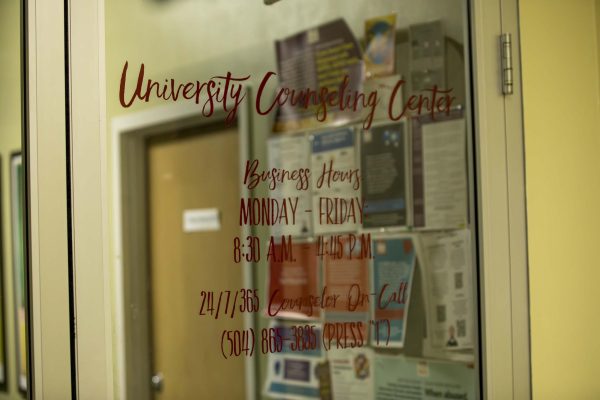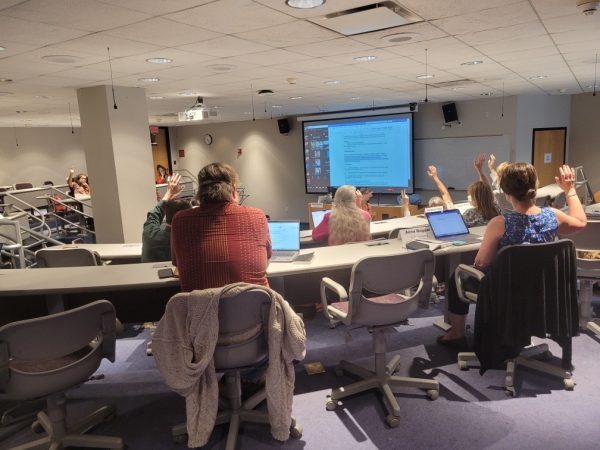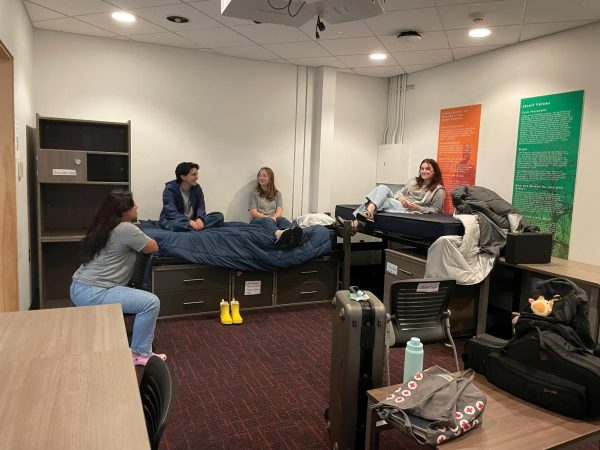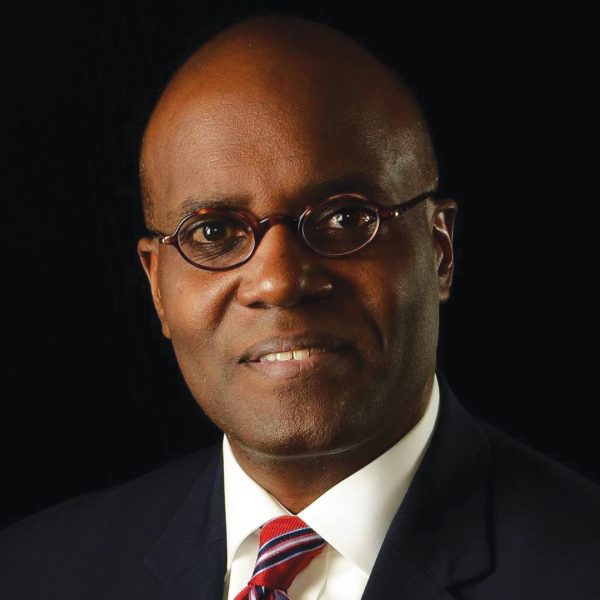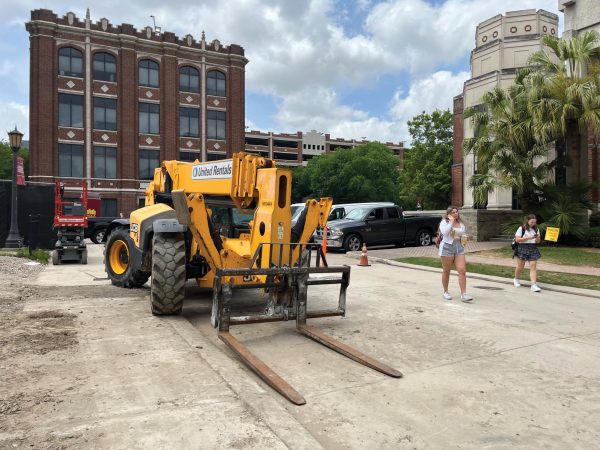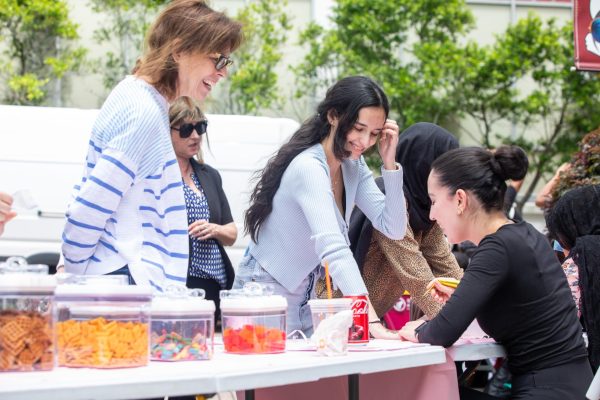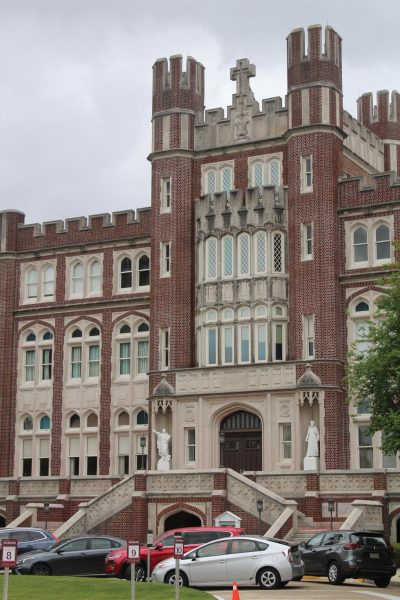Mission Priority Examen asks Loyola to reaffirm Jesuit ideals
Statue of Jesus that stands at the front of Loyola on Sept. 24. The statue symbolizes Loyola’s catholic identity and mission. Michael Bauer/The Maroon.
September 27, 2019
By the end of this school-year, Loyola will have to answer two vital questions: Does it want to stay a Jesuit Catholic institution; and if so, what are two to four initiatives it will pledge to prioritize over the next five years?
Those questions will come as the culmination of a year-long, deep-dive study of the university’s Jesuit ideals, called the Mission Priority Examen. In 2016, the Superior General of the Society of Jesus requested that all 28 American Jesuit Universities conduct the Examen as a reaffirmation of each institution’s mission statement before May, 2020, according to Michael Sheeran, president of the Association of Jesuit Colleges and Universities.
After 40 years of informal relationships between the Jesuit universities and church authorities, Sheeran said the Examen serves as an official process for schools to pinpoint their unique mission-related areas they want to focus on.
The Mission Priority Examen
Loyola is one of the final universities to embark on the process, according to The Rev. S.J., Justin Daffron, vice president of mission and identity and co-chair of the Mission Priority Examen steering committee.
“The study is designed to be affirmative and to allow us to look at our assets and then to ask ourselves the question: what more do we want to do in a way that would allow us to envision growing and excelling?” Daffron said.
Rooted in a prayer practice popularized by St. Ignatius of Loyola, the Mission Examen is modeled after the individual Examen, in which Jesuits are encouraged to use reflection to gain self-awareness through prayer.
“The purpose of the self-awareness is discernment,” The Rev. S.J. Gregory Waldrop, rector of the Loyola Jesuit community said.
And the end goals of discernment and awareness, according to Waldrop, are the same desired outcomes of Loyola’s Mission Examen.
The process involves looking back at Loyola’s past experience with mission, looking in and the current state of the university and looking ahead at how to improve and continue executing Jesuit ideals.
The Year-Long Process
The three-fold process has already begun. September is listening month and members of the steering committee are holding listening sessions throughout the month to engage with stakeholder groups at the university and to hear how Loyola’s Jesuit Catholic mission is experienced and lived with daily.
The steering committee singled out stakeholder groups across campus like faculty and staff, the Board of Trustees, the President’s Cabinet, and select student groups, like law students, Greek-affiliated students and student athletes.
For members of the community who want their voices heard but didn’t attend an official listening session, there is a survey on the Mission website that will stay up beyond the month of September.
The committee will then take all that information and compile reports for members of the steering committee to analyze which will help the team devise a methodology for prioritizing the data.
Come October, the process will move on to step two: Prioritization. The steering committee will take the ideas heard during the listening sessions and integrate them into a comprehensive report. Out of this work will come the two to four initiatives the university will pledge to continue working on in the future.
Daffron emphasized that these initiatives have the potential to be both positive aspects to build upon, and gaps in the university’s mission.
“The two to four things could be something good that we’re already doing,” he said. “Or maybe there’s an idea we need to hear that would help us serve our constituents, and I would call that a gap. There could be gaps, but there don’t necessarily need to be.”
After the self-study, a peer review team made up of high-level members of other Jesuit universities will visit Loyola’s campus in March. Following the site-visit, Loyola will present the final study to the father general. In light of his response, the university is then tasked with implementing its mission priorities over the next five years.
Why Now?
As the 2020 deadline loomed closer, Waldrop said the university had considered conducting the process last year, but decided waiting until the current year would be beneficial for all.
“Very frankly, given our troubles that we’ve had financially in particular, nobody was really eager to invite in a lot of scrutiny on something, so we kind of kept putting it off until we thought we have more time, we’re in a better place, the report will be better,” Waldrop said.
And University President Tania Tetlow, is also glad the process was pushed.
“We would typically have done it earlier, but because there was the presidential transition, they wanted to wait and let me get through my first year, and then go ahead and do it this year,” Tetlow said.
Although Daffron is a relatively new face on Loyola’s campus as of July, he brings with him two previous experiences with the Mission Priority Examen from his previous postings at Xavier University and St. Louis University.
“I know what I’m coming in to, but every school is unique, and actually the process we’ve designed here is more comprehensive than what was done at St. Louis University,” Daffron said. “I think that’s great because it’s very comprehensive in terms of what we’re doing so ideally, that will yield us very good outputs.”
Tetlow, too, sees Loyola being one of the last five universities to undergo the process as a positive.
“We’ve learned about how to have a very inclusive process where we hear from as many different voices as possible, to take advantage of the insights and ideas of our community and all of its diversity,” she said. “So, we’ve gotten a lot of encouragement from our colleagues.”
Despite her status as a non-Jesuit, Tetlow’s dedication to the mission is one of the most encouraging aspects of the Examen for Waldrop.
“I’m really impressed with the team that the president has built,” Waldrop said. “Just wonderful people who are not just competent at their particular jobs, but who really understand what the university is about, and that’s a testimony to President Tetlow.”
And for Tetlow, her unique position as a layperson within a Jesuit institution serves as a reminder that it is everyone’s job to live out the mission.
“My uncle Joe, who is a Jesuit, tells me that he thinks when he talks about Jesuit identity, people assume he just has to say those things, whereas when I say it, they maybe listen a little more closely,” she said.
Wheeling University
One of the previous schools to conduct the Examen was Wheeling Jesuit University — now Wheeling University, according to Sheeran.
The West Virginia university announced in April that the school would no longer have the sponsorship of the Society of Jesus, thus ending its status as one of the 28 Jesuit universities.
According to Sheeran, in response to serious financial problems, the university decided to drop all liberal arts majors in a reorganization effort which led to the loss of multiple tenured positions — decisions that led to the loss of Jesuit status.
“The Jesuit provincial talked with the president and the bishop at Wheeling, and once it was really clear that they were gonna go this route, then he withdrew the sponsorship because it wasn’t trying to be a type of Jesuit school,” Sheeran said.
But Sheeran believes the case of Wheeling is an anomaly.
“What I’ve found is that the schools themselves are very proud that the school is following this Jesuit approach to education,” he said.
Post — Examen
The end of the Examen in the spring marks the beginning of the real work for the university, according to Waldrop.
“Just like an accrediting agency, [the Society of Jesus] is going to come back in five years and say, ‘so, how have you been doing on those three or four priorities?’ And if a university hasn’t done anything sincerely, then that could be a problem, especially as we start looking at the reality of fewer Jesuits,” Waldrop said.
But Tetlow, Waldrop and Daffron all emphatically said there was a zero percent chance that Loyola will lose its Jesuit sponsorship this go-around.
“If Loyola Board of Trustees, faculty, students and staff said ‘we no longer want to be a Jesuit institution,’ the Society of Jesus would then listen,” Daffron said. “But I can tell you from my listening sessions there is a lot of pride in our Jesuit Catholic identity, and people see that as integral to the institution.”
Since this is the first time Jesuit universities have been asked to conduct the Examen, the Association of Jesuit Colleges and Universities has not yet made any official decisions about the future of the Mission Priority Examen, but Sheeran said he thinks the process will become a tradition repeated every five or ten years.
As September comes to a close and prioritization kicks off, Tetlow is encouraged about the upcoming process and its potential bounties.
“There are clearly enormous strengths in how well we carry out mission in so many ways,” Tetlow said. “I have no doubt that there will be really great and creative ideas on how to double down on those strengths.”


